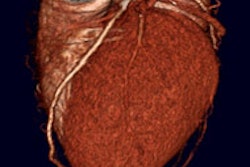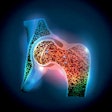DALLAS - Regional health information organizations (RHIOs) are being formed in the U.S. in an effort to provide community-based interconnected electronic health records (EHRs). The goal of these organizations is not to be a central repository of an electronic medical record (EMR), but rather to function as a peer-to-peer (P2P) community EMR broker or switch, according to a presentation at the Healthcare Information and Management Systems Society (HIMSS) conference yesterday.
"Access to data is the key," said Mike Skinner, executive director of the Santa Barbara County Care Data Exchange, an RHIO in Santa Barbara, CA. Skinner, along with Dr. David Channin, an associate professor of radiology and chief of imaging informatics at the Northwestern University Feinberg School of Medicine's department of radiology in Chicago, shared insight on RHIOs and the Integrating the Healthcare Enterprise (IHE) initiative.
"No single company or any single information system can meet all of the information management needs of a healthcare enterprise, much less all the requirements for truly complete, distributed, national and international electronic medical records," Channin said.
Channin listed five building blocks common to all RHIOs:
- Standardized content
- Standardized container
- Standardized identity correlation
- Standardized repositories
- Standardized information locator
"Information systems must communicate with one another to successfully accomplish healthcare processes," Channin said. "This can be accomplished in proprietary ways or by using standards."
Although standards are necessary, Channin noted that they are not sufficient to provide a complete architectural blueprint for crafting an RHIO. Because an RHIO is designed for point-to-point communications, there needs to be coordination between the systems. One of the most important aspects of this coordination is an agreed-upon flow, or process, of data through the system.
"IHE is a process that drives the use of existing standards to solve complex healthcare information processes that span multiple, heterogeneous information systems," Channin said.
For the standardized content portion of the RHIO building block, Channin pointed to the continuity of care record (CCR) specification developed by standards organization ASTM International of West Conshohocken, PA. The CCR is a core dataset of the most relevant and timely facts about a patient's healthcare.
It is to be prepared by a practitioner at the conclusion of a healthcare encounter in order to enable the next practitioner to readily access information electronically or on paper. It includes a summary of the patient's health status (such as problems, medications, and allergies) and basic information about insurance, advance directives, care documentation, and care plan recommendations. It also includes identifying information and the purpose of the CCR, according to ASTM.
The standardized container of an RHIO can be handled through the use of the HL7 clinical document architecture standard, Channin said. The standardized identity correlation portion of the RHIO can be developed through the use of the Patient Identifier Cross-Referencing for MPI (master patient index) IHE profile, he said. Standardized repositories for the RHIO can be built using the IHE Cross Enterprise Document Sharing Integration Profile.
Finally, Channin envisions a standardized information locator using a national health information network that is a collaboration of RHIOs functioning as P2P entities similar in function to a P2P file-sharing network such as Napster.
Channin, paraphrasing John F. Kennedy's inaugural speech, noted that a U.S.-wide EHR may not be finished in the first 100 days or even the first 1,000 days, or even perhaps in our lifetime.
"But let us begin," he said.
By Jonathan S. Batchelor
AuntMinnie.com staff writer
February 15, 2005
HIPAA security: IHE guidelines help ensure compliance, November 26, 2004
IHE's IT infrastructure starts comment period, June 18, 2004
IHE cardiology technical framework open for comment, June 17, 2004
IHE to test portable data integration profile, June 8, 2004
Dutch groups form IHE-Netherlands, January 21, 2004
Copyright © 2005 AuntMinnie.com



















